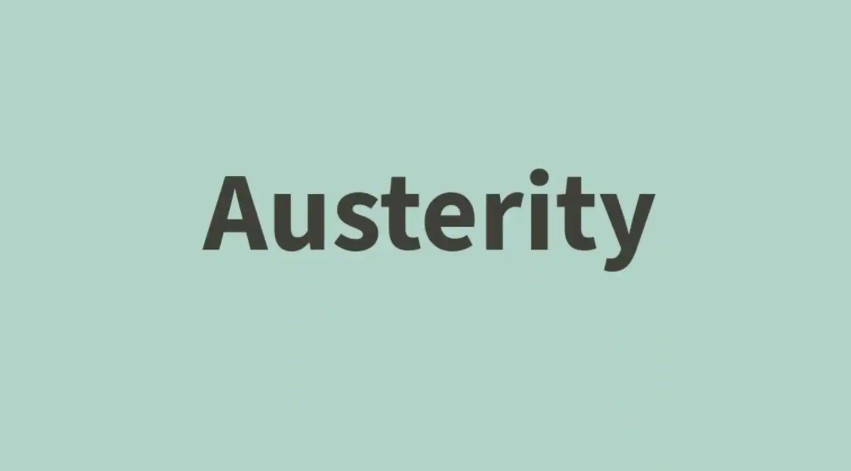Austerity is a term that has been deeply embedded in the UK’s political and economic discourse for over a decade. But what does austerity mean in politics, and why has it been such a central part of public policy since the 2008 financial crisis? This blog unpacks austerity, its implications on UK society, the economy, and politics, and provides you with a comprehensive understanding of its effects and controversies.
We’ll look at the historical background, the policy’s influence on public services, the arguments for and against austerity, and the political divide that it has created. From economic theories to real-life impacts, this article aims to clarify what austerity means today and what it could mean for the future of the UK.
What Does Austerity Mean in Politics?
A Closer Look at Austerity in Political Terms
Put simply, political austerity involves implementing financial strategies, such as reducing public spending, raising taxes, or a combination of both, to lower a nation’s budget shortfall. The goal is to decrease national debt and regain fiscal stability, typically during or following a period of financial crisis or recession.
In the UK, austerity became a key government policy following the 2008 global financial crash, which left the country with a substantial fiscal deficit. In response, the newly formed Conservative-Liberal Democrat coalition government, led by David Cameron and Nick Clegg, adopted a series of austerity measures in 2010.
Key Aspects of Austerity:
- Public Spending Cuts: Significant reductions in government expenditure, particularly in social services, local government budgets, and welfare systems.
- Tax Increases: Raising taxes to increase government revenue, including VAT hikes and adjustments to income tax thresholds.
- Public Sector Reforms: Aimed at reducing the cost of running public services without necessarily reducing the quality of services.
How Did Austerity Become a Political Strategy in the UK?
The Financial Crisis and Its Impact on UK Debt
To fully understand what does austerity mean in politics, we need to look at the financial context that led to the rise of austerity measures. The 2008 global financial crisis triggered one of the worst recessions in modern history, leading to a rapid increase in the UK government’s borrowing and public sector debt.
Before the crisis, the UK maintained a national debt level that was considered under control. However, the government was forced to spend heavily to stabilize the financial sector, which involved bailing out banks and boosting unemployment benefits, among other initiatives. By 2010, the UK had amassed a debt of around £1 trillion.
In response, the incoming government of David Cameron and George Osborne prioritized deficit reduction as the cornerstone of their economic strategy. Their message was clear: to restore economic health, the UK needed to make difficult choices about cutting government spending and raising taxes, leading to the introduction of austerity.
Key Austerity Measures:
- Spending Cuts: Decreasing funding for public services, including healthcare, education, and local government.
- Welfare Reforms: Reducing benefits for the unemployed, sick, and disabled, including cuts to housing benefits and child tax credits.
- Public Sector Cuts: Freezing wages, reducing government worker numbers, and curbing pension costs.
What Has Been the Impact of Austerity on Public Services?
The Social Costs of Fiscal Discipline
Austerity measures had an immediate and long-term impact on public services across the UK. While supporters argued that austerity was necessary for fiscal health, the real-world consequences were felt most acutely by vulnerable populations and public service providers.
NHS and Healthcare:

The National Health Service (NHS), once seen as a crown jewel of the British welfare state, was not immune to austerity cuts. Although the NHS was protected from some of the deepest cuts, other areas of health spending, such as social care, faced significant reductions.
- NHS Budgets: Funding increases were lower than expected, and the real value of NHS budgets was squeezed.
- Social Care: Elderly care services and mental health services were severely impacted by reduced funding, with many councils facing tough choices in providing adequate services to their communities.
Education:
Schools and higher education institutions also faced significant challenges during the austerity period. School budgets were cut in real terms, and higher education tuition fees increased as the government shifted more of the financial burden onto students.
- Tuition Fees: University fees were tripled in 2012, making higher education less accessible to many students.
- School Funding: Schools faced real cuts to their budgets, leading to larger class sizes, fewer resources, and, in some cases, teacher redundancies.
Welfare and Social Services:

The harshest effects of austerity were felt in welfare services, hitting society’s most vulnerable groups the hardest. Key welfare reforms included:
- Universal Credit: A major overhaul of the welfare system, which many argued led to delays in payments and a rise in poverty.
- Disability Benefits: Cuts to disability living allowance and assessments for disabled people led to widespread protests.
Was Austerity Successful in Achieving Its Goals?
The Economic and Social Trade-offs
While the intended goal of austerity was to reduce the national deficit and promote long-term economic growth, the outcomes of the policy are highly debated. Some argue that austerity was necessary to restore the country’s fiscal health, while others claim that it slowed economic recovery, increased inequality, and led to social unrest.
Key Arguments for Austerity:
- Reduced Budget Deficit: By 2019, the deficit had fallen significantly, dropping from 10% of GDP in 2010 to just 1.9%.
- Maintaining Confidence: By reducing the deficit, the government maintained the UK’s credit rating, which in turn kept interest rates relatively low.
- Rebalancing the Economy: Austerity was seen as a way to “rebalance” the economy away from government spending and towards private sector growth.
Key Criticisms of Austerity:
- Economic Slowdown: Critics argue that the deep cuts to public spending stifled economic growth and recovery, leading to higher unemployment and slower GDP growth in the early years.
- Rising Inequality: Austerity disproportionately affected the most vulnerable in society, particularly the poor, disabled, and elderly. Social mobility also stagnated, as fewer opportunities for advancement were available.
- Public Sector Strain: Services that millions rely on, such as the NHS and local government services, became overburdened, resulting in longer waiting times and deteriorating service quality.
Key Economic Indicators During Austerity (2010-2020)
| Indicator | 2010 | 2020 | Change |
| Budget Deficit (% of GDP) | 10.1% | 1.9% | ↓ 8.2% |
| National Debt (% of GDP) | 65.5% | 85.4% | ↑ 19.9% |
| NHS Funding (Real terms) | £110bn | £130bn | ↑ £20bn |
| Local Government Funding | £5.2bn | £4.6bn | ↓ £600m |
| Poverty Rate (Relative) | 15.1% | 18.4% | ↑ 3.3% |
Sources: Office for National Statistics (ONS), Institute for Fiscal Studies (IFS)
What Role Does Austerity Play in UK Politics Today?
Austerity: A Persistent Political Debate
Though austerity measures have been relaxed in some areas, the policies set in motion during the 2010s still shape the political landscape. COVID-19 resulted in increased government spending, temporarily halting austerity measures, but now, the UK faces a new set of challenges, including the ongoing cost of living crisis and the implications of Brexit.
Political Positions on Austerity Today:

- Conservative Party: Although austerity is not explicitly used as a term, the government continues to emphasize fiscal responsibility and debt reduction.
- Labour Party: The Labour Party has strongly opposed austerity measures, advocating for more public investment, particularly in social care and infrastructure projects.
- Liberal Democrats: Traditionally, the Liberal Democrats have sought a balanced approach, supporting debt reduction but advocating for investments in education and welfare.
Public Sentiment:
The political divide on austerity continues, with anti-austerity protests becoming more common. Public opinion has shifted, with growing support for policies that focus on investment in public services rather than continued cuts.
Final Thoughts: The Legacy of Austerity in UK Politics
So, what does austerity mean in politics today? While the term might no longer dominate headlines, its impact is still felt across the UK. The debate about austerity touches on deeper issues of economic fairness, social equality, and the role of government in supporting its citizens. As the UK moves forward, policymakers must weigh the lessons of austerity carefully to avoid repeating its most damaging effects while navigating future economic challenges.
FAQs: What Does Austerity Mean in Politics?
Is austerity the same as living within our means?
While both focus on reducing spending, austerity is a structured policy aimed at cutting government expenditure and increasing taxes, while “living within our means” is a more general concept that involves balancing day-to-day budgets.
Did austerity affect everyone equally?
No, the impacts of austerity were not uniform. Low-income families, those reliant on social services, and public sector workers were disproportionately affected, with many experiencing wage stagnation or job cuts.
Has austerity helped the UK’s economy?
There is no definitive answer. While deficits were reduced, the economic recovery was slow, and many social groups suffered. Economic growth was often sluggish in the years following austerity.
Will austerity be used again in the future?
It remains a possibility, depending on the UK’s economic situation. However, due to the growing cost-of-living crisis and the impact on vulnerable groups, a return to harsh austerity measures may be politically challenging.






